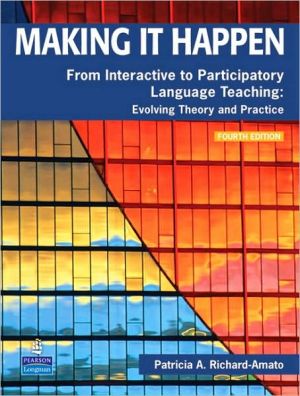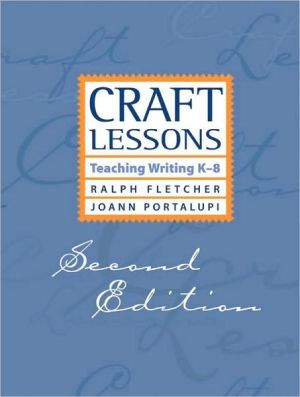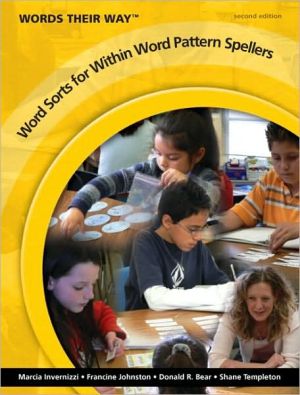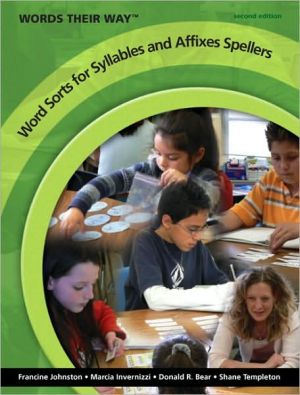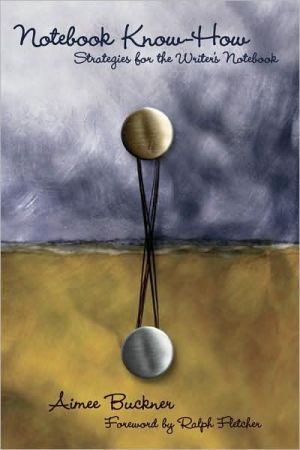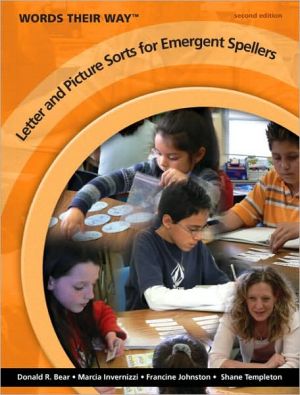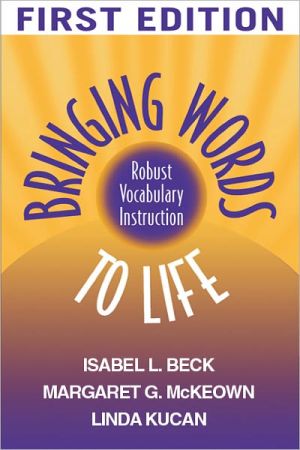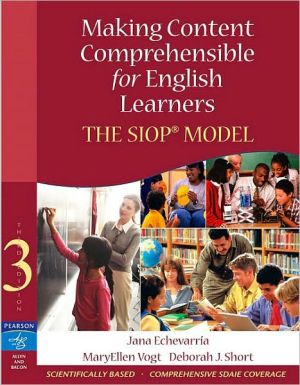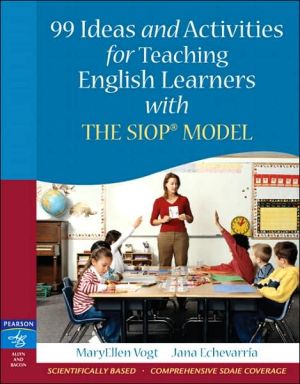Making it Happen: From Interactive to Participatory Language Teaching: Evolving Theory and Practice
This cutting-edge sourcebook for teachers provides a comprehensive vision of effective second language teaching and explores ways to create meaningful interaction leading to emergent particpatory language teaching. The fourth edition of Making It Happen presents a cyclic approach to theory and practice, in which theory and practice constantly inform each other.\ Features\ \ Strategies for teaching children, adolescents, and adults from beginning to advanced levels\ Am emphasis on peer- and...
Search in google:
This cutting-edge sourcebook for teachers provides a comprehensive vision of effective second language teaching and explores ways to create meaningful interaction leading to emergent participatory language teaching. The fourth edition of Making It Happen presents a cyclic approach to theory and practice, in which theory and practice constantly inform each other. Features * Strategies for teaching children, adolescents, and adults from beginning to advanced levels * An emphasis on peer- and self-evaluation in simulated and real classrooms * A practical reservoir for teachers as they develop their own methodologies and local practice * Discussions of issues critical to program development, lesson design, materials selection, video use, teacher research, and professional development (including SIOP) * Case studies from kindergarten through university level to stimulate professional dialog New to This Edition * Separate chapters on implicit/explicit teaching and on sociocultural/cognitive synthesis * Sections on form-focus strategies, World Englishes, research directions, corpus analysis, dialogical assessment, and the Acoma heritage language program * Updated research that reflects influential thinking for the 21st century Also by Patricia A. Richard-Amato (with Marguerite Ann Snow): Academic Success for English Language Learners: Strategies for K-12 Mainstream Teachers, Pearson Education/Longman, 2005
PART I THEORETICAL CONSIDERATIONSExploring Your Current Beliefs About Learning and Teaching LanguagesChapter 1 FROM GRAMMAR-BASED TO COMMUNICATIVE APPROACHES: A HISTORICAL PERSPECTIVEQuestions to Think About Grammar-Based ApproachesChomsky’s ContributionsThe ConnectionistCommunicative ApproachesSummary Questions and Projects for Reflection and Discussion Suggested Readings and Reference MaterialsChapter2 THE PROCESS OF LEARNING A SECOND LANGUAGE IN THE CLASSROOM: A COGNITIVE VIEWQuestions to Think AboutThe Interaction ApproachThe Process of Learning a Second LanguageError TreatmentInstructed GrammarSummary Questions and Projects for Reflection and Discussion Suggested Reading and Reference MaterialsChapter 3 TOWARD A SOCIOCULTURAL/COGNITIVE MODELQuestions to Think AboutA Comparison of L1 and L2 Language AcquisitionInformation-Processing ModelsWhere Do We Go from Here?Vygotsky’s Sociocultural/Cognitive PerspectiveA Proposed Dialogical Model for Second Language AcquisitionSummary Question and Projects for Reflection and Discussion Suggested Reading and Reference MaterialsChapter 4 EMERGENT PARTICIPATORY LANGUAGE TEACHINGQuestions to Think AboutEmpowerment in the Language ClassroomA Working Description of Participatory Language TeachingParticipatory PracticesMeeting Standards Through Participatory TeachingCommon MisunderstandingsEnabling Students Through Strategic LearningSummary Questions and Projects for Reflection and Discussion Suggested Readings and Reference MaterialsChapter 5 DEVELOPING SKILLS: IMPLICIT AND EXPLICIT TEACHING STRATEGIESQuestions to Think AboutImplicit and Explicit: What’s the Difference?Skills IntegrationNeeds Assessment: Product or Process Oriented?Teaching Strategies for Listening, Speaking, Reading, and WritingCritical LiteracySummary Questions and Projects for Reflections and Discussion Suggested Reading and Reference MaterialsChapter 6 THE AFFECTIVE DOMAINQuestions to Think AboutAttitudesMotivationLevel of AnxietyRelated FactorsCreating a Positive School and Community EnvironmentSummary Questions and Projects for Reflection and Discussion Suggested Reading and Reference MaterialsChapter 7 LANGUAGE ASSESSMENT AND STANDARDSQuestions to Think AboutLanguage Tests: A Traditional FrameworkTest Evaluation, Selection, and DevelopmentDetermining PlacementMaking Assessment an Integral Part of the Classroom EnvironmentIdentifying and Assessing Learner OutcomesStandard for Second and Foreign Language Teaching in the United StatesA Dialogical Approach to AssessmentSummary Questions and Projects for Reflection and Discussion Suggested Readings and Reference MaterialsPART II EXPLORING METHODS AND ACTIVITIESInteractive Methods and ActivitiesAdapting the Content of ActivitiesChapter 8 PHYSICAL INVOLVEMENT IN THE LANGUAGE LEARNING PROCESSQuestions to Think About The Total Physical Response: Taking Another LookTotal Physical Response StorytellingThe Audio-Motor UnitSummary Questions and Projects for Reflection and Discussion Suggested Readings and Reference MaterialsChapter 9 INTERACTIVE PRACTICESQuestions to Think AboutThe Natural Approach RevisitedModifying and Enhancing Instruction in the Language ClassroomSummary Questions and Projects for Reflection and Discussion Suggested Readings and Reference MaterialsChapter 10 CHANTS, MUSIC, AND POETRYQuestions to Think AboutChantsMusicPoetry Summary Questions and Projects for Reflection and Discussion Suggested Readings and Reference MaterialsChapter 11 STORYTELLING, ROLE PLAY, AND DRAMAQuestions to Think AboutWarm-UpsStorytellingRole PlayDrama Summary Questions and Projects for Reflection and Discussion Suggested Readings and Reference MaterialsChapter 12 GAMESQuestions to Think AboutNonverbal GamesBoard-Advancing GamesWord-Focus GamesTreasure HuntsGuessing Games Summary Questions and Projects for Reflection and Discussion Suggested Readings and Reference MaterialsChapter 13 WAYS TO PROMOTE LITERACY DEVELOPMENTQuestions to Think AboutThe Language Experience ApproachLiterature-Based CurriculumWriting WorkshopsAdvance Academic LiteracySummary Questions and Projects for Reflection and Discussion Suggested Readings and Reference MaterialsChapter 14 AFFECTIVE ACTIVITESQuestions to Think AboutWhat do Learner Value?What Role Can Teachers Play During Affective Activities?When Can Affective Activities Be Used?Other Important ConsiderationsPreparing Students for Affective ActivitiesActivities to Further Identify DevelopmentSummary Questions and Projects for Reflection and Discussion Suggested Readings and Reference MaterialsPART III PUTTING IT ALL TOGETHER: SOME PRACTICAL ISSUESSecond Language ProgramsForeign Language ProgramsTeachers New to a Particular CultureChapter 15 DEVISING A PLANQuestions to Think AboutIntegrating Methods, Strategies, and Activities into a Flexible CurriculumStructuring LessonsThemes Cycle/Investigative InquiryInfusing Standards into the CurriculumDeciding the Focus of the Instruction: Proficiency-Based, Task-Based, or Content-BasedUsing Peer Facilitators and Lay AssistantsCooperative Learning as a Management TechniqueWorking with Large and Mixed-Level ClassesSummary Questions and Projects for Reflection and Discussion Suggested Readings and Reference MaterialsChapter 16 TOOLS FOR TEACHING LAGUAGES: TEXTBOOKS, COMPUTER PROGRAMS, AND VIDEOSQuestions to Think AboutTextbooksComputer ProgramsVideosSummary Questions and Projects for Reflection and Discussion Suggested Readings and Reference MaterialsChapter 17 TEACHING LANGUAGE THROUGH THE CONTENT AREAS AND PROFESSIONAL DEVELOPMENTQuestions to Think AboutSubmersionImmersionBilingual Education in the United StatesProgram Possibilities for English LearnersProgram Possibilities for Foreign Language StudentsProfessional Development: Teacher Research, Observation, and EvaluationSummary Questions and Projects for Reflection and Discussion Suggested Readings and Reference MaterialsPART IV PROGRAMS IN ACTIONChapter 18 ESL PROGRAMSA College English Language ProgramA University Support Program: Project LEAPA Life-Skills Adult Basic Education ProgramA Secondary Sheltered English ProgramAn Elementary District-Wide ProgramA Kindergarten ESL Program within a Spanish Bilingual SchoolChapter 19 FOREIGN LANGUAGE PROGRAMSA Village Immersion Program for Global Understanding, Language Development, and MaintenanceA French Immersion Program for Elementary StudentsA Bicultural Institute for Children, Adolescent, and AdultsA Middle School Spanish ProgramA High School Spanish ProgramChapter 20 TWO-WAY BILINGUAL AND HERITAGE TRIBAL LANGUAGE PROGRAMSA Developmental Spanish/English ProgramAn Immersion Cantonese/English Language ProgramMaintaining American Indian Languages: A Pueblo Indian Language Immersion Program by Christine Sims, Acoma PuebloPART V CASE STUDIES: TEACHER NARRATION TO STIMULATE PROFESSIONAL DIALOGUECase Study 1: Motivating Beto (Kindergarten)Case Study 2: My “Good Year” Explodes: Bringing in the Parents (Elementary School)Case Study 3: Please, Not Another ESL Student (Middle School)Case Study 4: Conflict Resolution on Campus (High School)Case Study 5: A Multicultural Challenge (College/University)REFERENCES
